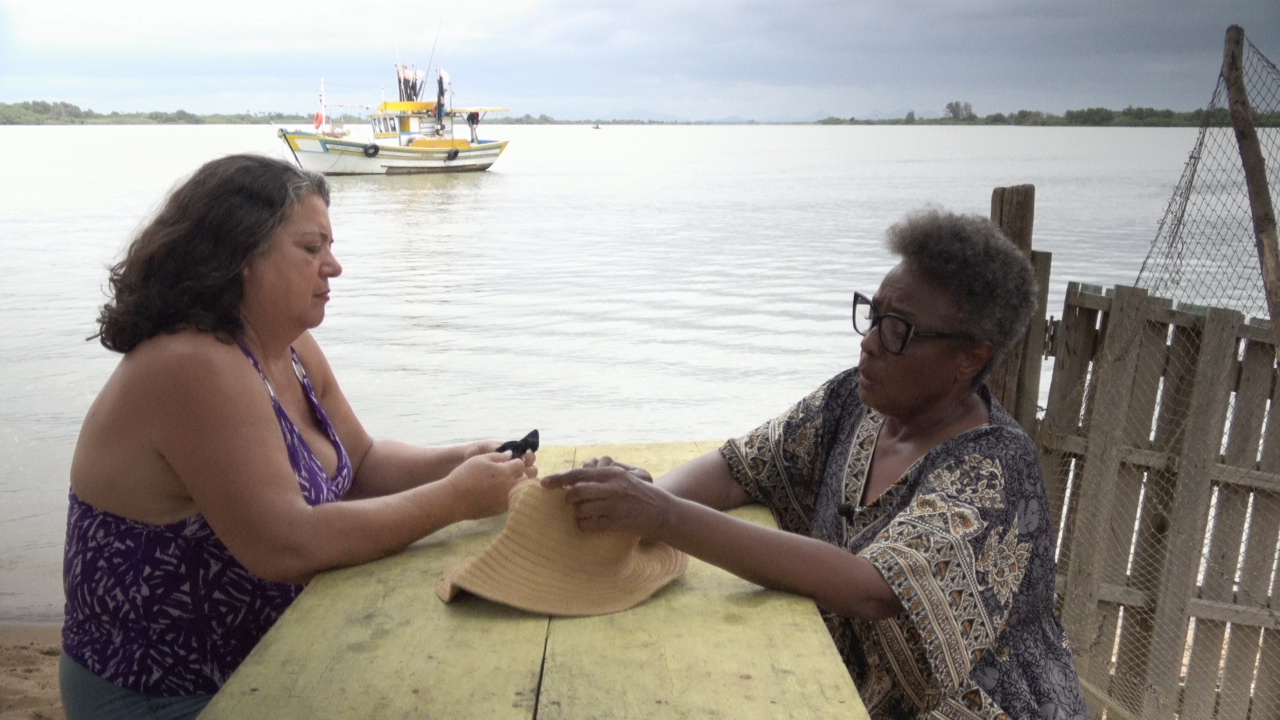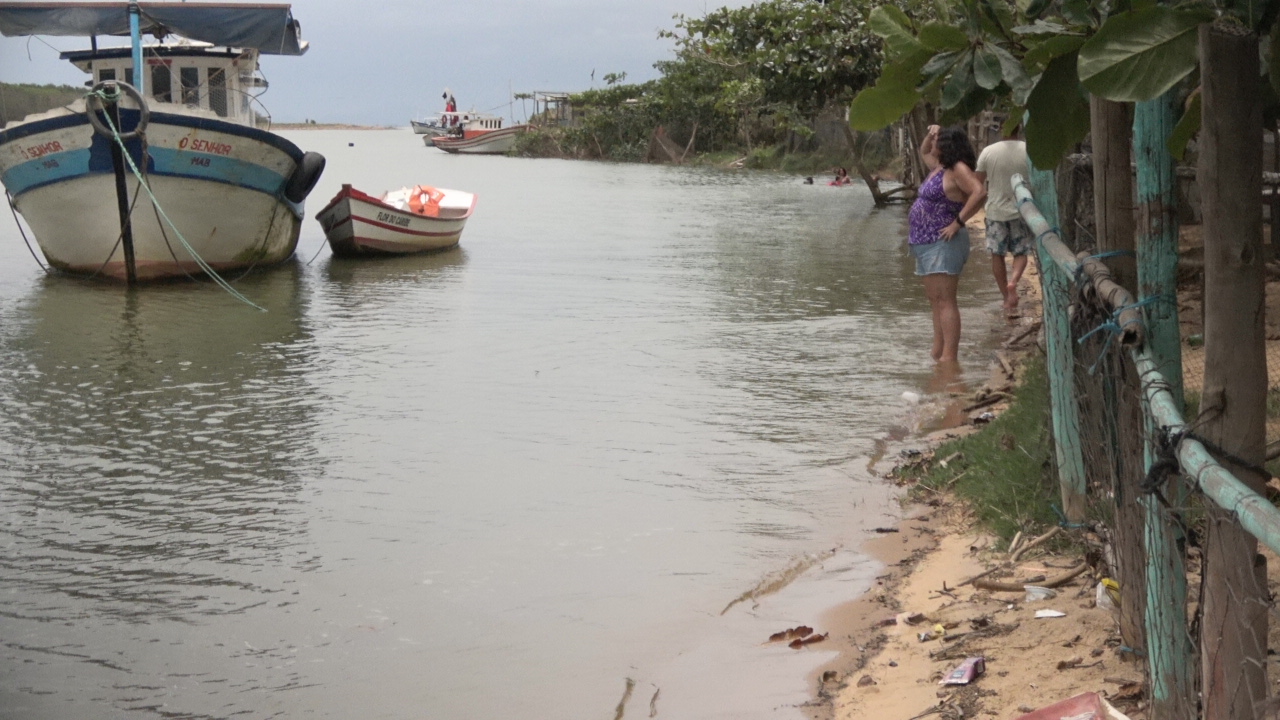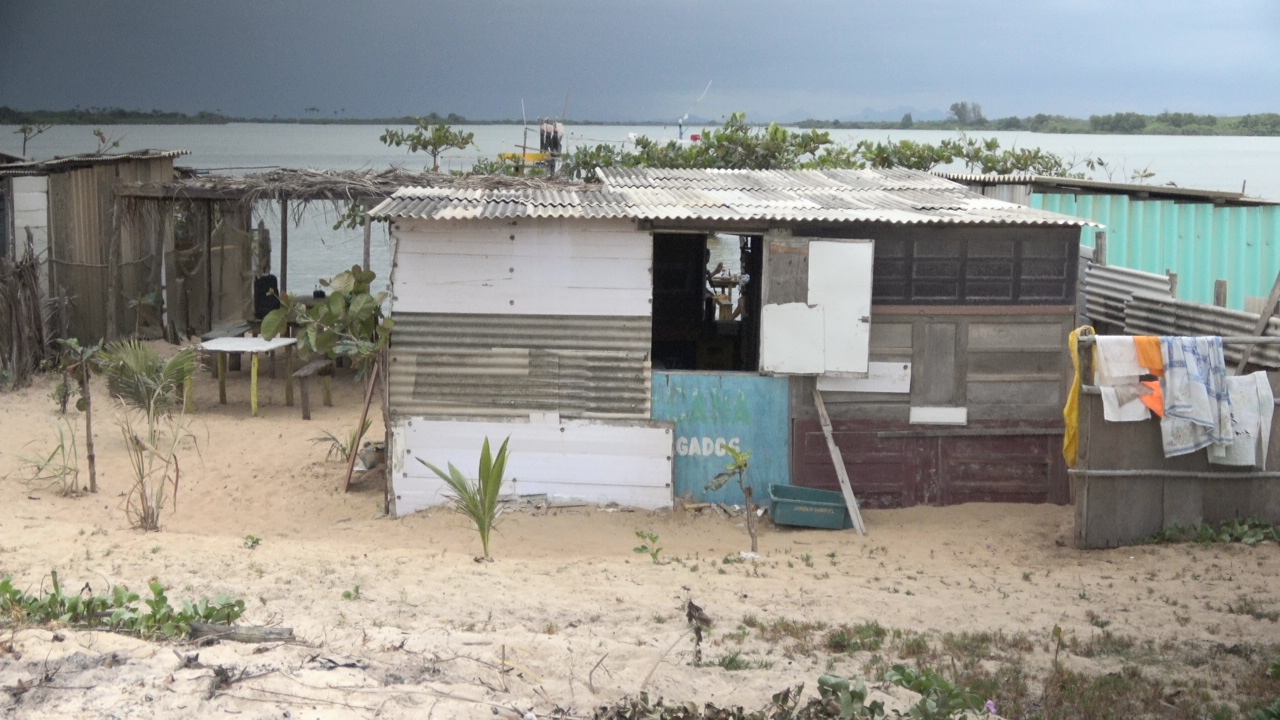“A Convivencia é uma Ilha” (“Coexistence is an island”) – Research-Creation in Unstable Territories
“A Convivencia é uma Ilha” (“Coexistence is an Island”) is a performative research project involving theatre, visual arts, social museology, and environmental art. It focuses on contextual action in unstable territories impacted by environmental catastrophes, extraction policies, and real estate speculation.
“A Convivencia é uma Ilha” is an ongoing post-doctoral research project developed by Dr. Fernando Codeço, artist-researcher, under the supervision of Dr. Sérgio Andrade (Federal University of Rio de Janeiro (UFRJ), as part of the Hemispheric Encounters Partnership project (York University), LabCrítica (UFRJ), and the Graduate Program in Dance (UFRJ), and is supported by the Social Sciences and Humanities Research Council of Canada (SSHRC).
This project continues the research initiated by Codeço during his doctoral thesis “Theatricalities of Erosion – essays on ecofagias, disfigurements, and shipwrecks” (defended in 2021 in the Graduate Program in Performing Arts at UNIRIO in collaboration with the Center for Research in Arts and Aesthetics at the University of Picardie Jules Verne, Amiens, France). This investigation was a creative, analytical, and conceptual project based on living with the socio-environmental phenomenon of marine erosion that has been affecting Atafona beach for over 70 years. Atafona is located in the municipality of São João da Barra in the northern state of Rio de Janeiro.
From the popular idea that “the sea eats the houses” (“o mar come as casas”), Codeço created the notion of “ecofagia” as an existential metaphor, a field of aesthetic experimentation, and a mode of cultural critique in times of environmental collapse. Along with the collectives CasaDuna and Grupo Erosão, he developed a series of artistic works, including the Mobile Museum project (Museu Ambulante); the subject of the post-doctoral research developed in 2021-2022 through the graduate program in Social Policies at the State University of Northern Rio de Janeiro Darcy Ribeiro (UENF).
CASADUNA AND GRUPO EROSÃO
CasaDuna is an arts-based research and cultural production group based in Rio de Janeiro. Initially dedicated to developing projects related to the coastal erosion phenomenon affecting the mouth of the Paraíba do Sul river in Atafona beach in São João da Barra, it now expands to other territories. CasaDuna is an independent project founded by Codeço and the philosopher and researcher Julia Naidin. CasaDuna engages research, curation, and archives based on materials and memories, gathering documents, books, newspapers, testimonies, and old images from the area that has already been taken by the sea.
CasDuna’s collection contains over 300 historical images of the region and includes rare books acquired from Jair Vieira, a craftsman who gathered this material over 40 years, hundreds of newspaper reports on the region collected by Dona Marilda, a small newsstand owner in Atafona, and other donated and loaned collections. Additionally, since 2017, CasaDuna has documented through photos and videos all the cultural CasaDuna has been documenting through photos the activities they carry out. Their documentation includes periodic photographs of the landscape and interviews with residents; material that already constitutes an archive of about two terabytes.
Grupo Erosão is a performance collective directed by Codeço and composed of performers Lucia Talabi, Jailza Motta, Rachell Rosa, Julia Naidin, and Mariana Moraes, scenographer Rafael Sánchez, anthropologist and actor Paul Macalli, and choreographer and dancer Guilherme Mattos. Grupo Erosão creates and carries out the artistic projects of CasaDuna through performance, street theater, video, visual arts, and social museology.
CasaDuna handles the executive production of the projects, conducts academic research, coordinates art residencies, and curates exhibitions. Both collectives were created in 2017 and (together and separately) have presented works in important cultural spaces and festivals in Brazil and abroad.
ATAFONA
Atafona beach is located in the municipality of São João da Barra at the mouth of the Paraíba do Sul river in the northern region of the state of Rio de Janeiro. A traditional fishing community lives at Atafona and it is also a popular resort area for tourists from the neighboring city, Campos dos Goytacazes. Tourism has brought with it a desire for homes along the seashore and most of the seaside construction serves this purpose. Atafona is known for its intense coastal erosion —a significant part of the territory has already been lost. Since the 1960s, erosion has destroyed more than 15 streets and 500 buildings in the area, creating a dramatic environmental situation. Erosion in Atafona is, among other factors, aggravated by various human interventions around the Paraíba do Sul river. Most notably, the dam built in the 1950s has diverted about 2/3 of the Paraíba do Sul’s water to the Guandu river for the construction of a hydroelectric plant and to the water supply of the metropolitan region of the city of Rio de Janeiro. The degradation of the Paraíba do Sul river reflects a loss of awareness of the social and environmental importance of the river. One of CasaDuna’s objectives is to integrate environmental awareness in dialogue with the people of the Atafona communities.
A CONVIVENCIA É UMA ILHA / COEXISTENCE IS AN ISLAND
“A Convivencia é uma Ilha” / “Coexistence is an Island” continues the work developed by Codeço and Grupo Erosão in Atafona and expands now to include research in other territories experiencing similar situations of extreme destabilization. For example, the Açu district, also in São João da Barra, has been marked by a violent process of neo-extractivism since the installation of the Açu Industrial Port Complex. The Port of Açu enacts many human rights violations, environmental crimes, and has removed many small farms and families. CasaDuna’s research also looks at the history of the Landless Workers’ Movement (Movimento dos Trabalhadores Rurais Sem Terra – MST) settlement Cícero Guedes in the municipality of Campos dos Goytacazes, located on the site of a former sugar mill, and other territories impacted by removals linked to mega-events in the port area and in the western zone of Rio de Janeiro, such as the case of Vila Autódromo, a community that underwent a violent removal process during Rio’s preparation for the 2016 Olympic Games. What these territories have in common is the instability to which their residents are subjected whether due to political, social, or environmental factors, which is why they use the notion of “unstable territories” to refer to the focus areas of this research.
“A Convivencia é uma Ilha” / “Coexistence is an Island” is a process-based and transdisciplinary performative research project that uses theater, performance, social museology, and environmental art to create a performative collage of fragments made up of the stories of people whose territories have been threatened either by neo-extractive processes and/or as a result of environmental changes. Stories like that of Dona Belita, a local resident, who remained living on the extinct island in Atafona, at the delta of the Paraíba do Sul river, even after losing seven houses to the sea; Dona Noêmia Magalhães, leader among small farmers impacted by the Port of Açu; Dona Penha, a leader of the Vila Autódromo community who resisted the violent removal process promoted by the city of Rio de Janeiro; the Evictions Museum, born out of the resistance to the evictions in Vila Autódromoa, a social museology project partnered on this research. GrupoErosão bases “A Convivencia é uma Ilha” / “Coexistence is an Island” on these stories and the archival and interview collections gathered by CasaDuna and the Evictions Museum (Museu das Remoções) of Vila Autódromo in the western zone of Rio de Janeiro.
The project involves collaborative meetings and story sharing between residents and members of Grupo Erosão. They use performance strategies as listening tools, for the production of oral knowledge, as a meeting space, and as a collective learning practice to create forms of resistance to extractivism and environmental degradation.
The entire creation process is carried out through performative actions designed in collaboration between residents and Grupo Erosão, and the process is being recorded, generating abundant material for publications and audiovisual productions, both based on the testimonies of the local people. Plans for a performance-lecture by Codeço about this creative process are also forthcoming which will provide opportunities for exchanges with other universities, congresses. and seminars.
THE PERFORMANCE
“A Convivencia é uma Ilha” / “Coexistence is an Island” by Grupo Erosão, directed by Fernando Codeço, and produced by CasaDuna, will premiere in June 2024 at Teatro de Bolso Procópio Ferreira in Campos dos Goytacazes. Funded by Federal Law Paulo Gustavo – “Support for Theater – Evoé RJ” award from the State Secretariat for Culture and Creative Economy of the State of Rio de Janeiro, the show will be both a video installation and a live performance. The video installation can be visited by the public before and/or after the performance.
The project will be carried out in 4 stages:
1. Filmed Rehearsals: Moments of investigation/preparation in rehearsal rooms, the scenes and processes will be filmed by the cast and directors themselves and later edited and incorporated into the set/video installation;
2. Artistic residencies: These are creative immersions where the group will perform and record a series of performances and workshops in the “unstable territories;”
3. Staging/video installation: Moments in which the dramaturgy of the show will be constructed together with the editing of the audiovisual material for the video installation;
4. General rehearsals, premiere and presentations: The show will take place on the border between fiction and documentary and will use the languages of theater, performance, and video. There will be three presentations, each approximately 1h30min in length, at Teatro de Bolso Procópio Ferreira in Campos dos Goytacazes. At the end of the presentations, conversations will be proposed with invited community leaders.
Methodology
The work adopts multiple approaches involving research in the following languages: body expression, scenic performance, audiovisual production, video installation, archive research, field research, dramaturgical writing, and performative experiences. These research activities occur simultaneously and in a non-hierarchical manner.
Each member of the group has their own research platform, which will be guided by the universe of their respective characters. Each performer in the group will produce elements for their own “editing island,” composing a universe of images, sounds, reflections, and bodily forms that relate to the issues of the fictional characters and the metafable that will be indicated to them. (The materials produced on each performer’s “editing island” may be incorporated into the final video installation of the work). The focus of the work will not be on mimetic interpretation aimed at representing the characters. Instead, the investigation will aim to bring the conflicts experienced by the characters closer to those experienced by the performers. In other words, each performer will act to bring the characters, their conflicts, and the relationship between these conflicts (or lack thereof) closer to their own life.
The dramaturgy will operate through choral and polyphonic processes, presenting different perspectives of the same scene. The performances/scenes will be created from the content produced in the individual research of the performers of Grupo Erosão in their “editing islands” and through three stages of work: 1. filmed rehearsals, 2. performative experiences, and 3. body/scene/video installation editing.
The “filmed rehearsals” are moments of investigation/preparation in which the group will be working in rehearsal rooms without the interference of external elements. We call them “filmed rehearsals” because they will indeed be recorded by the group’s own members, not only as a form of documentation but also as a scenic element and language research. After each rehearsal, we will produce videos that will in turn compose the “editing island” of the directing team. The proposal is that each rehearsal simultaneously addresses the performers’ bodily research, forms of photographic production, and the relationships between the performances of bodies and projected images. The filmed rehearsals will be an important preparation stage for the “performative experiences.”
The “performative experiences” will be immersions carried out by Grupo Erosão in the following “unstable territories:” Atafona Beach and the Açu district in the municipality of São João da Barra, Cícero Guedes settlement in the municipality of Campos dos Goytacazes, and Vila Autódromo (Eviction Museum) in the West Zone of Rio de Janeiro. In each immersion, a set of performative actions will be carried out in dialogue with the residents of the unstable territories. The performative actions will operate at the border between fiction (the fable) and documentary (the metafable). The fable will not be narrated linearly but rather fragmented, through an editing/collage operation that will be carried out in the third stage of the process, where fragments of the videos produced in the filmed rehearsals and performative experiences, which will compose the video installation, will be utilized, along with texts and enactments that will be presented live during the performance.
See also Grupo Erosão’s project, Do rio ao mar – Rio Paraíba vivo! / From the river to the sea – Paraíba river lives!






